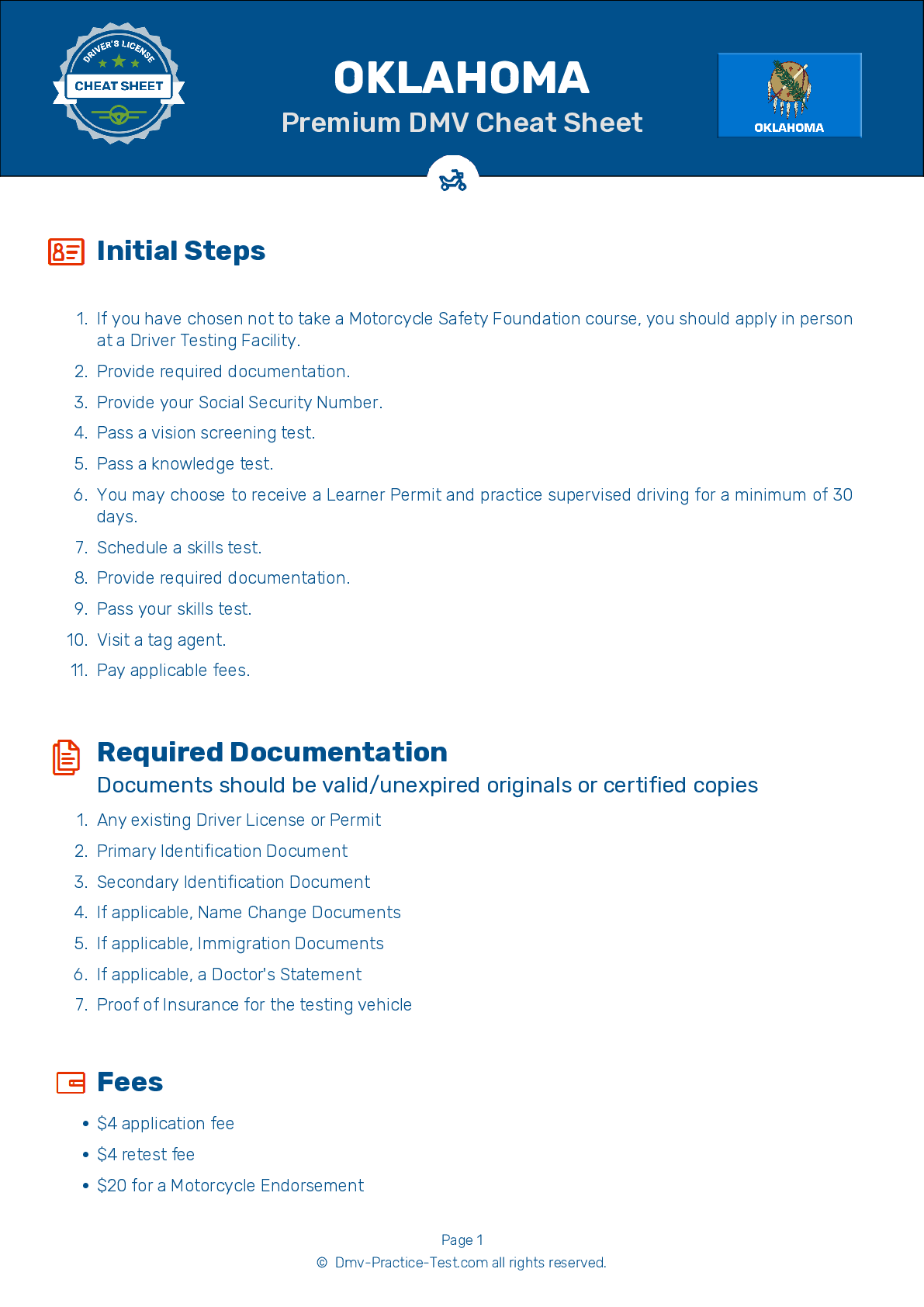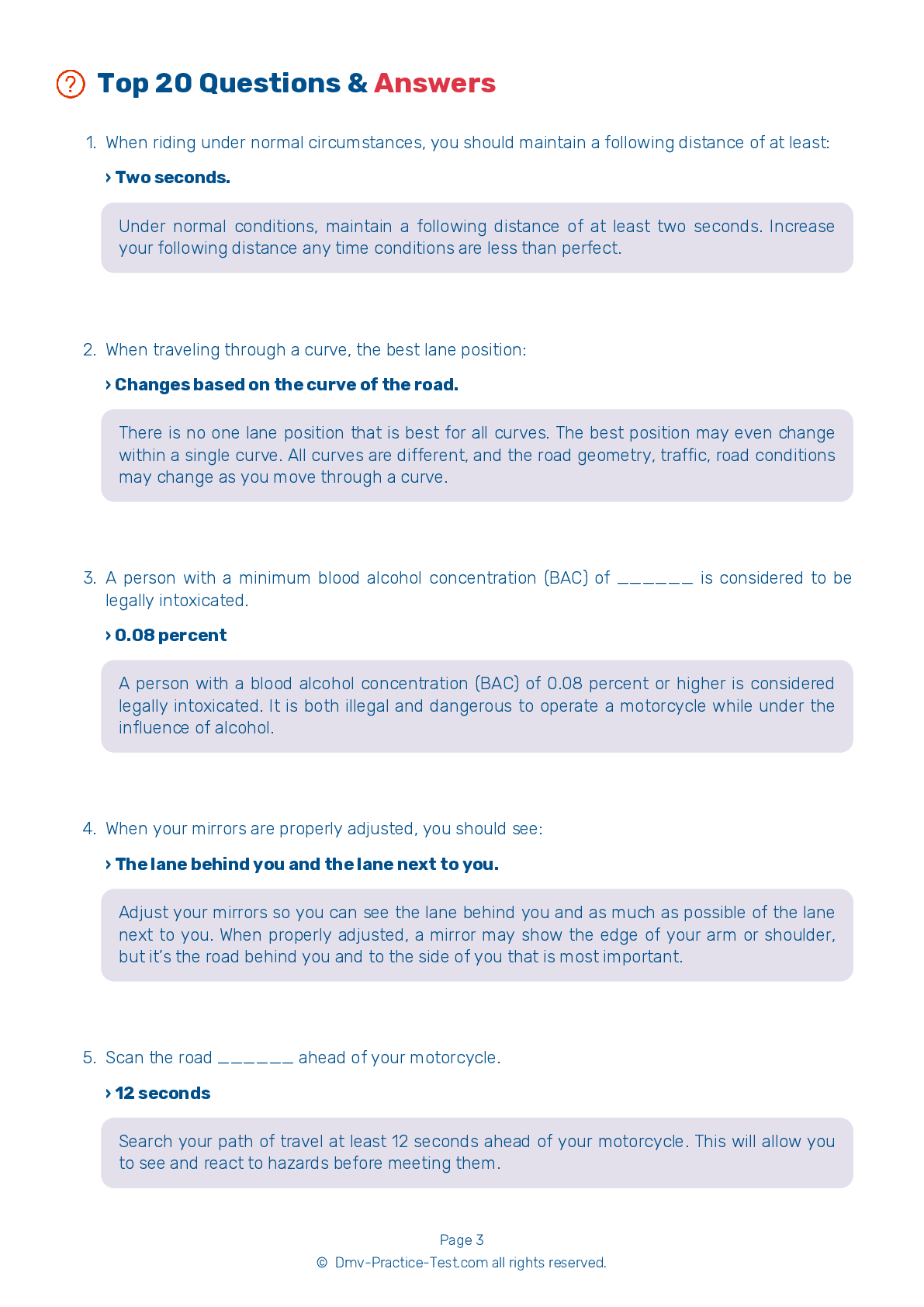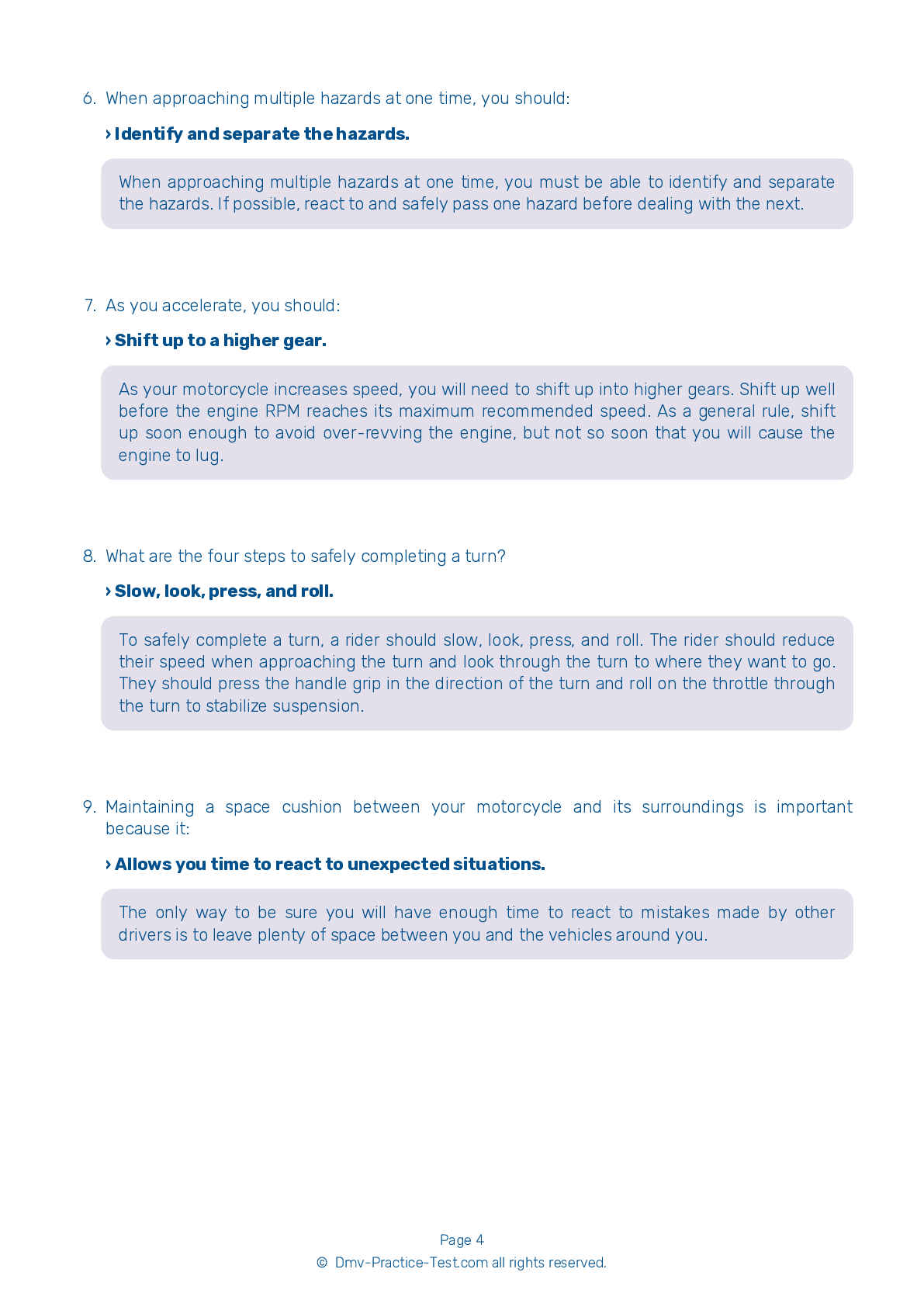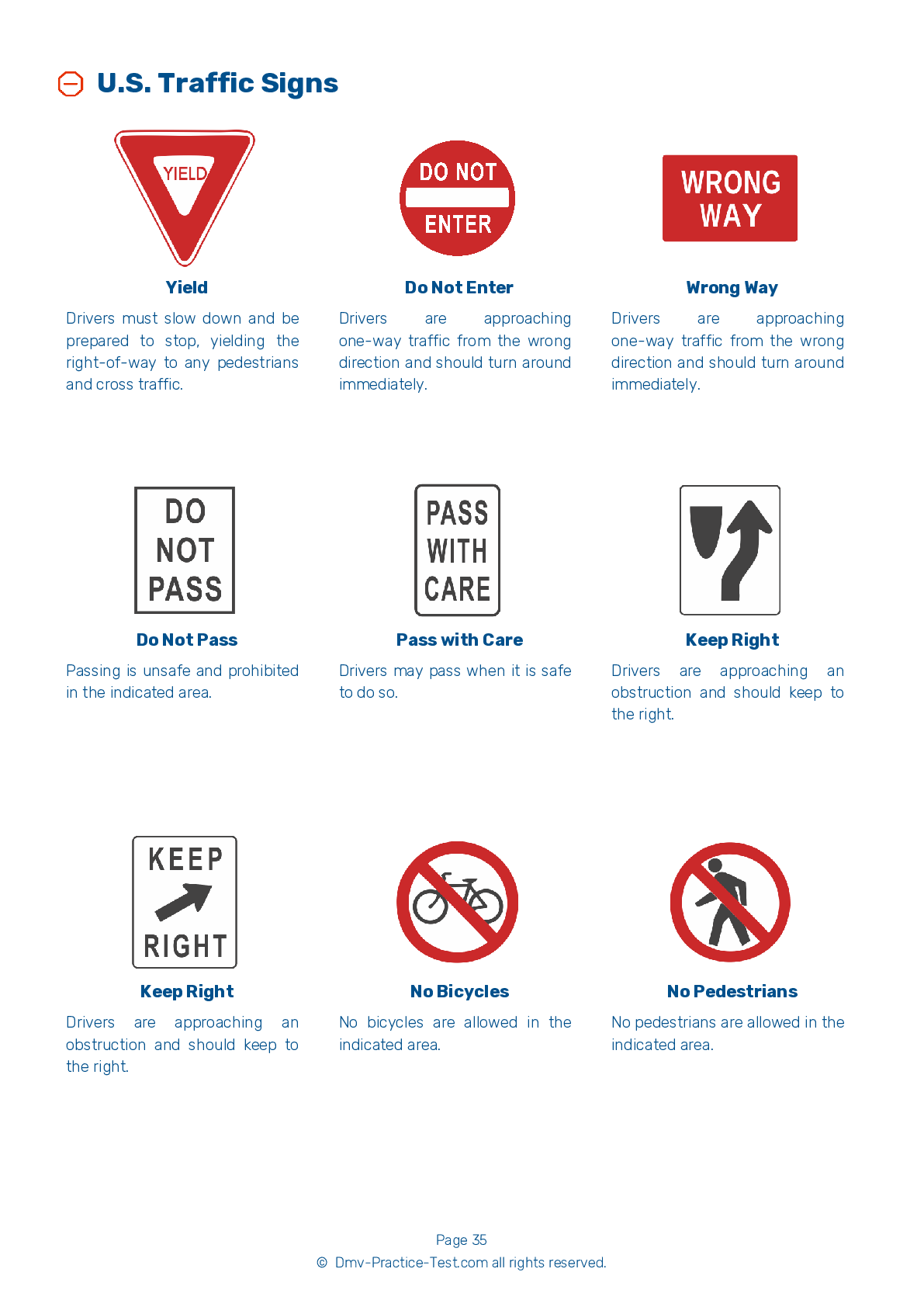Motorcycle Test | License OK 2025 | FREE Online Practice! #5
Take this FREE motorcycle test (license in OK 2025) to check your knowledge of the road rules. To improve your results, download a motorcycle handbook online, study theory, and practice for free on our website. Still worried about how to get a motorcycle license in Oklahoma in 2025? Check our website for more sample tests, train as much as possible, and boost your grades!
1 . This sign means:

This sign warns that the road is slippery when wet.
2 . When approaching a blind intersection, riders should:
When approaching a blind intersection that is controlled by a stop line or stop sign, you must first stop where indicated. You may then edge forward and stop again just short of where the cross traffic lane meets your lane. From that position, lean your body forward and look around buildings, parked cars, or bushes to see if anything is approaching. Make sure your front wheel stays out of the crossroad while you are looking.
3 . Fatigue can be increased by:
To reduce the danger of fatigue when riding, dress to protect yourself against tiring weather conditions, such as wind and rain. Limit yourself to no more than about six hours of riding per day and stop for a break at least once every two hours. Avoid taking artificial stimulants since you may experience extreme fatigue when they start to wear off.
4 . When riding a three-wheeled motorcycle, you should stay in:
Unlike when riding a two-wheeled motorcycle, you are limited in lane positioning when riding a three-wheeled motorcycle. Keep toward the center of the lane to be sure your wheels do not cross the painted lines into opposing traffic.
5 . If your motorcycle begins to wobble, you should:
Trying to accelerate out of a wobble is dangerous and will only make your motorcycle more unstable. Instead, grip the handlebars firmly (without trying to fight the wobble), gradually close the throttle to slow down, and move your weight as far forward and downward as possible. Pull off the road as soon as you can.
6 . In addition to hazardous road conditions, riders should search for:
Riders should continually scan ahead of, to the sides of, and behind their motorcycles. They should look for hazardous road conditions as well as traffic that could become hazardous.
7 . A flat front tire is especially hazardous because:
A flat front tire is especially dangerous because it affects your ability to steer. If your front tire goes flat while you are riding, safely exit the road as quickly as possible.
See the exact questions that will be on the 2025 Oklahoma DMV exam.
99.2% of people who use the cheat sheet pass the FIRST TIME
Jeneen was tired of paying $5/gallon. She got herself a scooter that required the motorcycle license. She studyed the motorcycle test cheat sheet and passed her test the next day!
Christopher tells us how he knew nothing prior to obtaining the motorcycle study guide, and he only got one question wrong because he clicked on the wrong answer by mistake.



